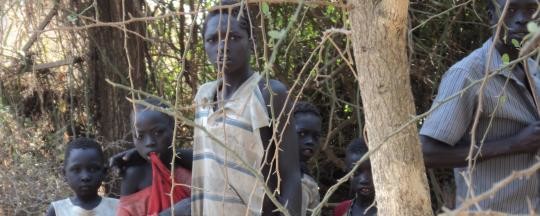Maban County has become a haven for more than 4,000 people fleeing other areas in Upper Nile State in spite of widespread fears of attack, which the county commissioner says are unfounded.
Commissioner James Basha Tiwa says the security situation is calm and stable in his county in spite of a recent incident of mass hysteria that caused many people to run from their homes.
In an interview with Radio Tamazuj, Basha noted that about 2,600 refugees from other parts of the state have been registered in Zarzura area and more than 1,500 in Banashowa area in the last week.
He said most of the arrivals are women and children arriving without men. The children especially are suffering from fatigue, hunger and thirst during their journey to Maban. He said he saw children arriving with legs swollen from too much walking.
Some of the areas from which they are coming are Falluj, Melut and Malakal. “As soon as they arrived I went to talk to organizations operating in the area to provide them food and medicines as well as other essential services,” the commissioner said.
Panic and rumours
The commissioner also dismissed rumours that he says caused panic and insecurity in the county: “Yesterday a large number of citizens ran away when some people spread rumours that the rebels are waging an attack in Maban. Even now some citizens are still on the run.”
Tiwa also noted that most of the organizations have deserted the area since the fighting erupted in Juba, though some such as Doctors Without Borders (MSF) remain active. The commissioner also expressed concerns that food aid for refugees from Blue Nile would run out.
Basha urged the citizens of his county to shun tribalism. He also called on organizations which were driven by the conflict to return to provide services to the suffering internally displaced people and the Blue Nile refugees in the county.
File photo: Refugee children in Maban County, 2012 (Radio Tamazuj)




